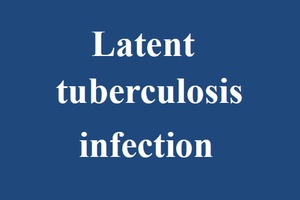Intensifying action against latent tuberculosis infection
If 8% of persons with latent tuberculosis could be permanently protected each year, the global TB incidence in 2050 would be 14 times lower as the incidence in 2013, with no other intervention needed.
On 28 May 2015 the NEJM published an article by authors from the Global TB Programme of WHO and Johns Hopkins University on latent tuberculosis (TB) infection, the management of which constitutes an important component of the End TB Strategy. Although the vast majority of persons latently infected by tuberculosis have no signs or symptoms of TB disease and are not infectious, they are at risk of developing active TB disease during their lifetime.
“Management of latent tuberculosis in population groups at
high risk of developing TB particularly in countries with low
incidence of TB is a fundamental intervention for elimination of
tuberculosis,” said Dr Mario Raviglione, Director of the
Global TB Programme of WHO and one of the authors of the paper.
“It is time to intensify our actions against latent
tuberculosis infection,” he added. The paper reported that
if 8% of persons with latent tuberculosis could be permanently
protected each year, the global incidence in 2050 would be 14
times lower as the incidence in 2013, with no other intervention
needed. The paper summarises the pathogenesis, epidemiology,
diagnosis, and treatment of latent tuberculosis infection and
addressed critical gaps in the understanding of this
complex condition propsing the necessary research agenda.
The paper particularly highlighted the huge potential that a new
test or treatment for this public health problem would generate,
including in market terms. Such potential about latent TB
infection, which is estimated to affect one third of the world
population, should motivate the corporate sector to invest in
research. The article therefore also calls for the reassessment
of the global burden and a better understanding of the magnitude
of latent tuberculosis infection to inform both clinical and
public health measures. “Intensifying research efforts and
cooperation across disciplines including novel public-corporate
partnerships are critical to fully address the risk of latent
TB” said Dr Haileyesus Getahun, who is the lead author of
the paper and coordinator of the team working on latent TB at
the Global TB Programme in WHO. This publication comes at the
time when WHO recognizes the management of latent tuberculosis
infection as an essential element in the implementation of the
END-TB strategy and the TB elimination framework in low
incidence countries. In early 2015 WHO issued the
‘Guidelines on the management of latent tuberculosis
infection’ (http://www.who.int/tb/publications/latent-tuberculosis-infection/en/) which provides recommendations for a public health approach
to implement evidence-based practices for testing and treating
latent TB in low TB incidence countries. It also recently
established a Global Task Force to get expert advice on how to
scale-up detection and treatment of latent infection. The
Task Force is composed of 31 members coming from over 25
different countries, selected on the basis of their technical
skills and expertise in latent TB programmatic management,
research and development.


